A Master Post Of Thomas Romain’s Art Tutorials.
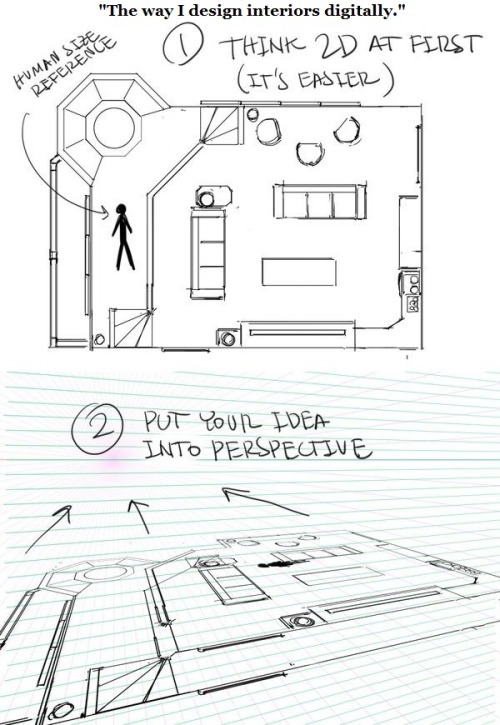

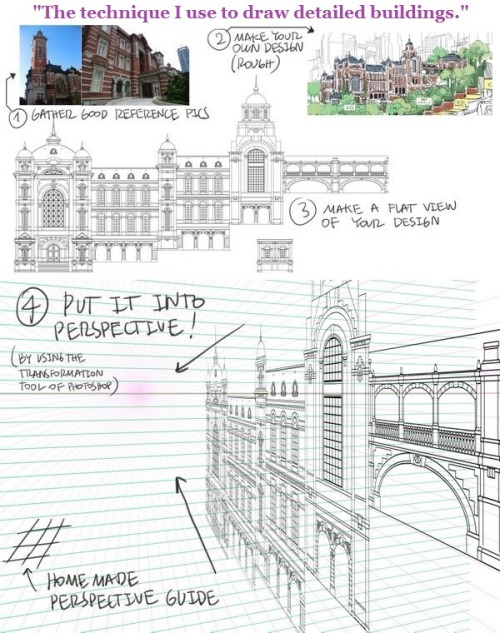
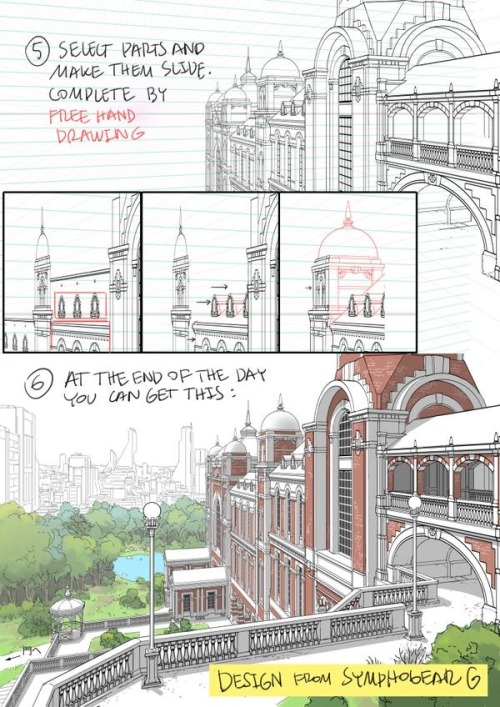




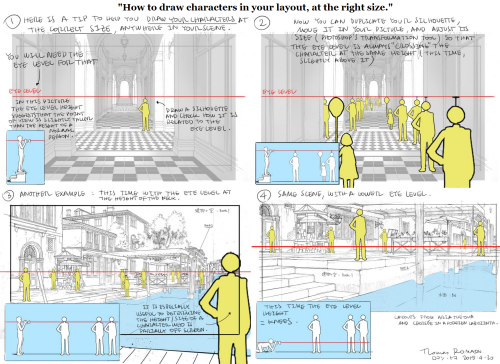
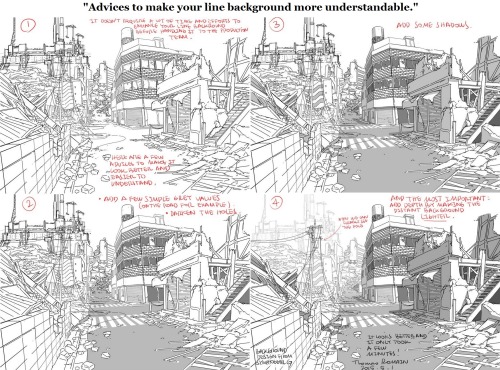
A master post of Thomas Romain’s art tutorials.
There’s not enough space to post all of them, SO here’s links to everything he has posted (on twitter) so far : 1 2 3 4 5 6 7 8 9 10 11 12.
Now that new semesters have started, I thought people might need these. Enjoy your lessons!
More Posts from Basket-of-references and Others









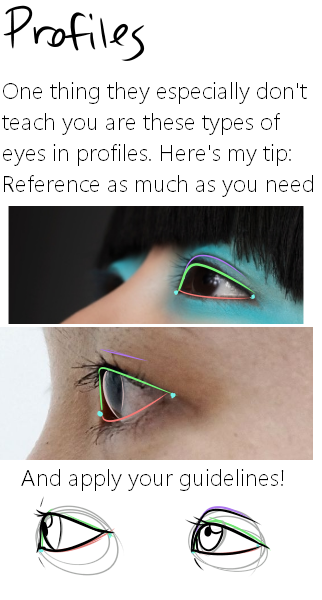
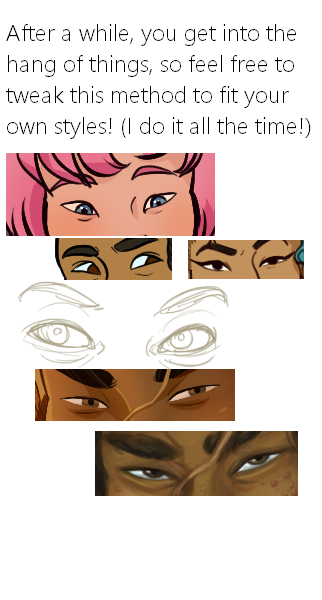
Here it is, my long winded tutorial, complete with some step by step action. I see a lot of people talk about wanting to diversify their artwork but not knowing how. This is my help to you. You really should take the time to invest in learning diverse eye shapes as diverse artwork always makes you a better artist. And frankly I’m really tired of drawing tutorials that talk up character diversity but only have the stereotypical “one Asian eye”.
I did some step by steps for those three diagrams, but I actually got them from this blog which has 14 of those examples! (Bonus: it’s a makeup blog so if you need help with that or want some idea of how to shade these eyes, there ya go)

"and the centry owl stood guard, protector of all in need." TFE, S1E13
Love love love Nightshade's new form 🦉
I compiled a reference for all my artist homies, and myself~




I've had this little idea in my head for a while now, so I decided to sit down and plot it out.
Disclaimer: This isn't meant to be some sort of One-Worksheet-Fits-All situation. This is meant to be a visual representation of some type of story planning you could be doing in order to develop a plot!
Lay down groundwork! (Backstory integral to the beginning of your story.) Build hinges. (Events that hinge on other events and fall down like dominoes) Suspend structures. (Withhold just enough information to make the reader curious, and keep them guessing.)
And hey, is this helps... maybe sit down and write a story! :)
WHY YOU SHOULD WRITE HORRIBLY:
1. You’ll never write anything if you don’t
Digital Painting: tips for beginners
Heyo! I got asked if I could make a tutorial on digital painting so I’m gonna throw together some advice meant for people who are starting out and want to figure out exactly how this stuff all works. Because it’s hard! What I hope to accomplish here is to make painting more approachable for you.
Firstly, I have put together something like this before, so for archival purposes here it is: http://holy-quinity.tumblr.com/post/89594801811/i-dont-know-how-much-of-this-kind-of-thing-you
For those of you who don’t wanna bother reading that, here are the main points:
1. Learn your program and its tools, from brush properties to layer styles. And I mean learn them. Make a cheatsheet that shows you exactly what each button and scale does, both in isolation and in conjunction with other buttons and scales. Refer to this as much as possible until it is intuitive. The end goal is to know exactly what to do to your brush’s settings to achieve a given effect.
2. It’s perfectly okay to use your sketches, linearts, and other forms of line in your paintings. They can help guide the form and there’s no need to make something fully “lineless”! I never make things “lineless.”
3. Study other people’s art and try to think how they could have possibly achieved the effects they did. You can learn a lot just by observing and mentally recreating the process stroke by stroke—muscle memory is a powerful tool at your disposal. This becomes easier to do once you’ve started doing item 1 above.
OKAY!
So where the heck do you even begin?
What I’m gonna do is try to make digital painting as approachable as possible for someone who’s never really done it. The main idea here is that digital painting is just like real painting. So if you’ve ever done real painting, you already kinda know what’s coming.
I’m gonna assume you know the basics of digital art: you can sketch, line those sketches using layers and opacity changes, and fill the lines with color, maybe even opting to add some shading…and you’ll get something like this:

You know, cell-shaded, or maybe the shading’s blended, but you’ve still obviously a line drawing with color put down on layers beneath the lines.
The next intuitive step is to try going “lineless”…but when you remove the lines you get this:

idk about you but I’m laughing at how stupid this looks
When I was first teaching myself to paint digitally, I didn’t really know how to deal with this. Without lines, the form of the subject vanished or became a mess like the above. Even if I was meticulous and careful about placing down the color such that without the lines layer turned on, the shapes fit together, it didn’t look quite right. There’d be gaps, I wouldn’t know how to incorporate the subject into a background, the contrast wouldn’t be high enough, or it’d just in general look too much like a screenshot from Super Mario 64.
Painting requires a different process than the above. You’ll have to let go of some of your habits and conventions. Such as staying in the lines. Such as fully relying on the lines. Like, I love my lines, I love my sketches—but in painting, they are guides for form, and are not the form itself. So let me go through how I approach a given painting:

My painting process starts with a sketch (here a boring portrait for demonstrative purposes). I make the opacity of the sketch layer something like 30%, and then throw down my base colors on a new layer underneath. I’m not being meticulous about the sketch itself, because again it’s just meant to guide my placement of color. I’m also not meticulous about my placement of the color.
We’re essentially sketching with color. Because ultimately what we want is for the color to take on the form and shapes conveyed by the sketch.
There’s a lot going into this about how to use value, how to shade, how to use color, etc. that I’m kinda skipping over because it takes a lot of time to explain…but there are hundreds of tutorials out there on those topics so please, google around! I found some helpful tuts that way when I was starting out.
Something I find v useful is to keep selecting colors that already exist in your image for shading and hue adjustment. This is why I start with really blendy, low-opacity brushes when throwing down color on top of the background. I can then select colors within there that are a mix of the two.
For instance, I’ll select the color of the lines here:

…and use that to shade:

And maybe I’ll select one of the darker shades around his eye, but not the darkest, to make the shading a smoother gradient…and so on.
What I do in general at this point is go over the shapes and lines of the sketch. Such that I can turn off the sketch layer and see this:

I’m replacing the lines with shading and value. I’ll continue to do this as I keep adding color.

This is all super loose. I am not dedicated to any particular stroke. I just want the colors and shading and light source to be right. I’ll use overlay layers to boost contrast or add a hue.
Here are other examples where I used this process:


I am constantly changing brushes and brush settings as I paint. It really depends on what effect I want where. I am also constantly selecting new colors and applying or blending those in. I don’t believe in having some uniformly applied base color and then shading with only one or two…that’s what I’d do if I was cell-shading like the first drawing I showed you here, but painting should be about messing with color and opacity and blending to make millions of hues!
Good rule of thumb: Hard, opaque brushes for applying color. Soft, dilute brushes for blending colors. Sometimes hard, dilute brushes can make some cool blending effects! I personally prefer harder edges on my shading so that’s a brush I use often.
This is getting a bit long so I’m gonna split it up into multiple parts, but really what I want you to get from this is:
1. learn the tools at your disposal until they are intuitive
2. sketch and line are guides for form, not the form itself
3. rather, hue and value will produce the form
And of course, practice makes perfect!!! Every drawing you make, every painting you make, will bring you one step closer to the artist you want to be, and thus every drawing and every painting, no matter what, is a success.
🌸Describing Scents For Writers 🌸| List of Scents
Describing aromas can add a whole new layer to your storytelling, immersing your readers in the atmosphere of your scenes. Here's a categorized list of different words to help you describe scents in your writing.
🌿 Fresh & Clean Scents
Crisp
Clean
Pure
Refreshing
Invigorating
Bright
Zesty
Airy
Dewy
Herbal
Minty
Oceanic
Morning breeze
Green grass
Rain-kissed
🌼 Floral Scents
Fragrant
Sweet
Floral
Delicate
Perfumed
Lush
Blooming
Petaled
Jasmine
Rose-scented
Lavender
Hibiscus
Gardenia
Lilac
Wildflower
🍏 Fruity Scents
Juicy
Tangy
Sweet
Citrusy
Tropical
Ripe
Pungent
Tart
Berry-like
Melon-scented
Apple-blossom
Peachy
Grape-like
Banana-esque
Citrus burst
🍂 Earthy & Woody Scents
Musky
Earthy
Woody
Grounded
Rich
Smoky
Resinous
Pine-scented
Oak-like
Cedarwood
Amber
Mossy
Soil-rich
Sandalwood
Forest floor
☕ Spicy & Warm Scents
Spiced
Warm
Cozy
Inviting
Cinnamon-like
Clove-scented
Nutmeg
Ginger
Cardamom
Coffee-infused
Chocolatey
Vanilla-sweet
Toasted
Roasted
Hearth-like
🏭 Industrial & Chemical Scents
Metallic
Oily
Chemical
Synthetic
Acrid
Pungent
Foul
Musty
Smoky
Rubber-like
Diesel-scented
Gasoline
Paint-thinner
Industrial
Sharp
🍃 Natural & Herbal Scents
Herbal
Aromatic
Earthy
Leafy
Grass-like
Sage-scented
Basil-like
Thyme-infused
Rosemary
Chamomile
Green tea
Wild mint
Eucalyptus
Cinnamon-bark
Clary sage
🎉 Unique & Uncommon Scents
Antique
Nostalgic
Ethereal
Enigmatic
Exotic
Haunted
Mysterious
Eerie
Poignant
Dreamlike
Surreal
Enveloping
Mesmerizing
Captivating
Transcendent
I hope this list can help you with your writing. 🌷✨
Feel free to share your favorite scent descriptions in the replies below! What scents do you love to incorporate into your stories?
Happy Writing! - Rin T.
i love love love the way you paint back lighting!! do you have any tips/ a step by step for the way you do it?
ended up making a whole painting just to break it down and explain my general process for subjects lit from behind so heres that + a timelapse!

main thing for drawing anything with a strong light source behind is to make the main subject Darker and more desaturated to convey that the light is behind them rather than to their sides (face cant be properly lit if the light is behind). Also making the Main highlight the brightest hue in the image helps to intensify it. I tend to use teeth/eyes as a good comparison point

some people have a tendency to make the sclera white out of habit but darkening that+ the rest of the whites helps the image read as Darker compared to the brighter highlight

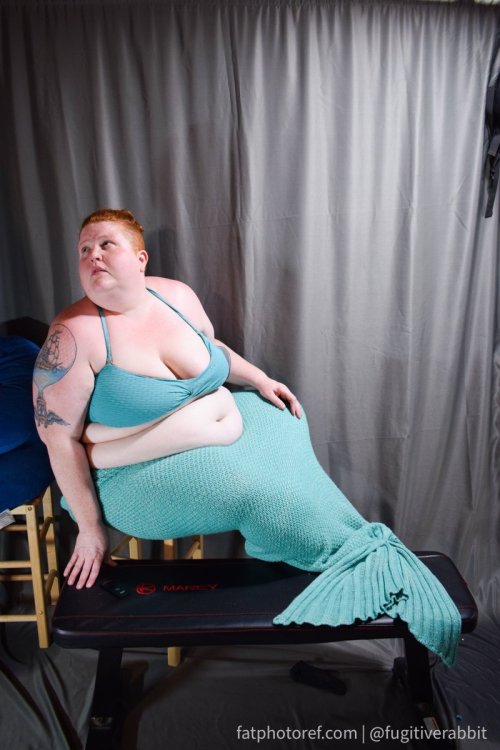


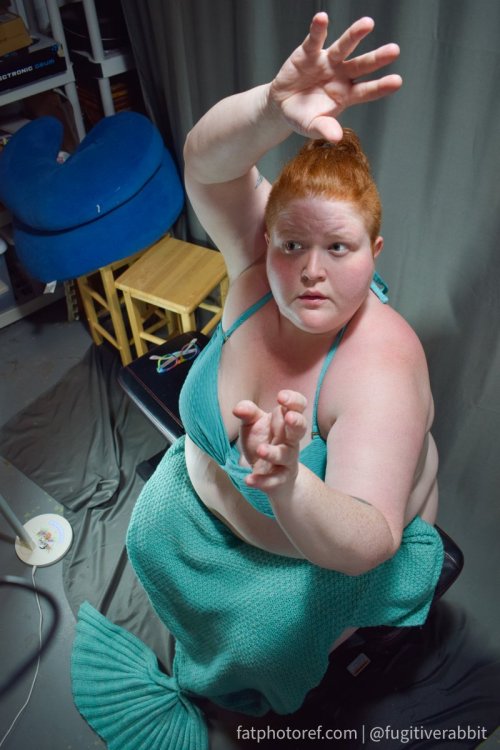
Just a reminder about fatphotoref.com—it exists!! I'll be updating with new photos next week and hopefully more regularly after that. Request access by going to bit.ly/fpraccess 💙🧜♀️ happy mer may!
I forgot I have to be active here so here’s my Twitter tutorial on how to draw folds I made a while back to help a friend!






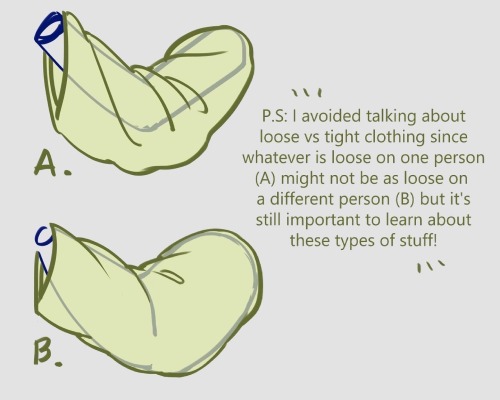

Attention anyone who needs hairstyle references
I want to introduce all of you to this amazing place called the ukhairdressers style gallery.
It’s basically a massive database full of high-quality images of different hairstyles. I mean, look at all the options in that sidebar (and part of it’s cut off):

In total they have 976 pages of hairstyles with about 17 styles each, that’s about 16592 hairstyles to look at.
Look at all the stuff they’ve got! Long hair:

Short hair:

Straight hair:

Curly hair:

Afro hair:

Men’s hair:

Hair on older models:

Extra-fancy hair:

Even crazy avant-garde hair:

So if you need help with designing a character or you just want to practice drawing hair, this is a fantastic resource.
-
 tamdam41 reblogged this · 1 week ago
tamdam41 reblogged this · 1 week ago -
 eggbagelpanacea liked this · 1 week ago
eggbagelpanacea liked this · 1 week ago -
 katco-cereal liked this · 1 week ago
katco-cereal liked this · 1 week ago -
 pvtannielennoxx liked this · 1 week ago
pvtannielennoxx liked this · 1 week ago -
 payaso-pastel liked this · 1 week ago
payaso-pastel liked this · 1 week ago -
 mossandfrogs liked this · 1 week ago
mossandfrogs liked this · 1 week ago -
 admin-240 liked this · 1 week ago
admin-240 liked this · 1 week ago -
 nochnye-vedmy liked this · 1 week ago
nochnye-vedmy liked this · 1 week ago -
 dontpanicatallbut reblogged this · 1 week ago
dontpanicatallbut reblogged this · 1 week ago -
 paralysis-wendys reblogged this · 1 week ago
paralysis-wendys reblogged this · 1 week ago -
 serranodebergerac liked this · 1 week ago
serranodebergerac liked this · 1 week ago -
 changelingirl reblogged this · 1 week ago
changelingirl reblogged this · 1 week ago -
 changelingirl liked this · 1 week ago
changelingirl liked this · 1 week ago -
 ongoingmunchies39 liked this · 1 week ago
ongoingmunchies39 liked this · 1 week ago -
 scrycrystal liked this · 1 week ago
scrycrystal liked this · 1 week ago -
 istillbelieveinmagic142 liked this · 1 week ago
istillbelieveinmagic142 liked this · 1 week ago -
 lucia1234lizeth liked this · 1 week ago
lucia1234lizeth liked this · 1 week ago -
 rainfal1 liked this · 1 week ago
rainfal1 liked this · 1 week ago -
 semerbakdior liked this · 1 week ago
semerbakdior liked this · 1 week ago -
 osu8635 reblogged this · 1 week ago
osu8635 reblogged this · 1 week ago -
 osu8635 liked this · 1 week ago
osu8635 liked this · 1 week ago -
 weed78 liked this · 1 week ago
weed78 liked this · 1 week ago -
 neverenoughthyme reblogged this · 1 week ago
neverenoughthyme reblogged this · 1 week ago -
 never-ever-posts reblogged this · 1 week ago
never-ever-posts reblogged this · 1 week ago -
 unforunatelyforunately liked this · 1 week ago
unforunatelyforunately liked this · 1 week ago -
 kail-lizuc reblogged this · 1 week ago
kail-lizuc reblogged this · 1 week ago -
 kosukecheckered liked this · 1 week ago
kosukecheckered liked this · 1 week ago -
 mannagryn1 liked this · 2 weeks ago
mannagryn1 liked this · 2 weeks ago -
 wiralonprimesskits liked this · 2 weeks ago
wiralonprimesskits liked this · 2 weeks ago -
 edenslice liked this · 2 weeks ago
edenslice liked this · 2 weeks ago -
 lamb200345567 reblogged this · 2 weeks ago
lamb200345567 reblogged this · 2 weeks ago -
 yceptomniversstudios reblogged this · 2 weeks ago
yceptomniversstudios reblogged this · 2 weeks ago -
 yceptomniversstudios liked this · 2 weeks ago
yceptomniversstudios liked this · 2 weeks ago -
 flufferdooodle reblogged this · 2 weeks ago
flufferdooodle reblogged this · 2 weeks ago -
 xena-tam reblogged this · 2 weeks ago
xena-tam reblogged this · 2 weeks ago -
 xena-tam liked this · 2 weeks ago
xena-tam liked this · 2 weeks ago -
 dearestcher reblogged this · 2 weeks ago
dearestcher reblogged this · 2 weeks ago -
 dearestcher liked this · 2 weeks ago
dearestcher liked this · 2 weeks ago -
 basileia-longrhn reblogged this · 2 weeks ago
basileia-longrhn reblogged this · 2 weeks ago -
 cherrymarss liked this · 2 weeks ago
cherrymarss liked this · 2 weeks ago -
 alephzdraws liked this · 2 weeks ago
alephzdraws liked this · 2 weeks ago -
 rhobi liked this · 2 weeks ago
rhobi liked this · 2 weeks ago -
 echoofsouls liked this · 2 weeks ago
echoofsouls liked this · 2 weeks ago -
 tfa-cube09 liked this · 2 weeks ago
tfa-cube09 liked this · 2 weeks ago -
 thevoidssong reblogged this · 2 weeks ago
thevoidssong reblogged this · 2 weeks ago -
 not-cookie-aura liked this · 2 weeks ago
not-cookie-aura liked this · 2 weeks ago -
 mosaic-marquise liked this · 2 weeks ago
mosaic-marquise liked this · 2 weeks ago -
 karekarecuracura liked this · 2 weeks ago
karekarecuracura liked this · 2 weeks ago -
 tiredcatboy reblogged this · 2 weeks ago
tiredcatboy reblogged this · 2 weeks ago -
 moonrise-illustration liked this · 2 weeks ago
moonrise-illustration liked this · 2 weeks ago
